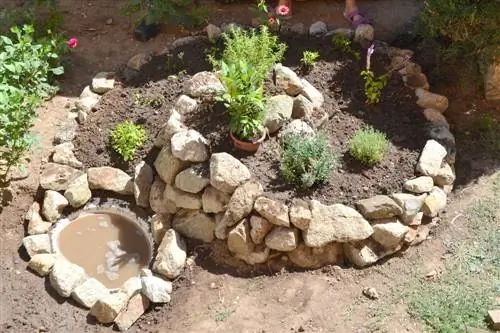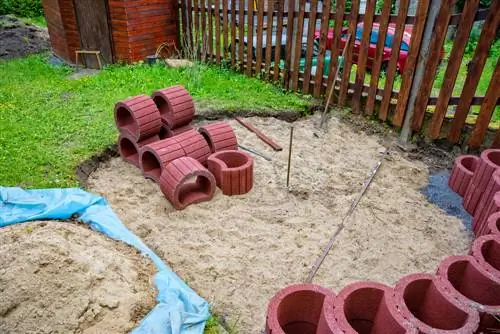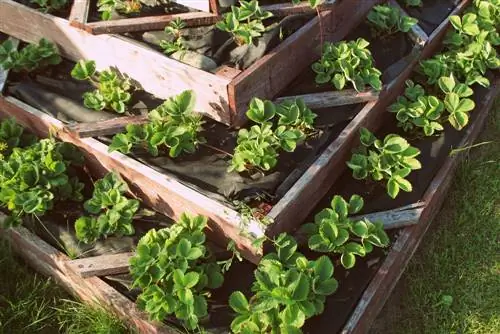- Author admin [email protected].
- Public 2023-12-16 16:46.
- Last modified 2025-01-23 11:21.
Fieldstones are not only a particularly cheap material to obtain, they also offer small animals such as beetles, lizards or slowworms a comfortable shelter between the stones. You can also build an insect roost for wild bees and bumblebees, for example by inserting one or two drilled, thick pieces of wood into the spiral. However, this should not have a north-south orientation, but rather point east to south.

How do I build a herb spiral out of field stones?
To build a herb spiral out of field stones, you need field stones, gravel, building rubble, stone residues, sand, gravel, compost and various planting substrates. Mark the outline, dig the soil layer, layer materials, place stones in a spiral and fill the bed area.
Material
To build a herb spiral out of field stones, you will of course primarily need field stones. You can often get these free of charge from farmers who already have to collect the fields before plowing in summer or spring (depending on the crop being grown). Just ask - and get help and a sufficiently large transporter, because field stones are very heavy. Don't choose items that are too small or very large: ideally, they should be about the size of a man's fist and be easy to transport. You will also need to build the mound:
- gravel
- Construction rubble
- Stone remains (e.g. broken bricks)
- smaller field stones
- Sand / gravel
- mature compost
- as well as various plant substrates from nutrient-poor to nutrient-rich
Construction instructions
And this is how the field stone spiral is built:
- Mark the outline of the herb spiral with a wooden stake, string and a stick.
- ideally the herb spiral is about two meters in diameter and 60 centimeters high.
- Now dig out the top layer of soil to the depth of a spade.
- First pile up the stone and rubble residues to form a hill approx. 50 centimeters high.
- This is followed by a first layer of earth, which consists of the removed topsoil.
- However, the turf and other plant and root remains should be removed.
- The shaping stones are placed in a spiral around this hill.
- The now delimited bed area is filled with different substrates with a layer of 15 to 25 centimeters.
- Starting from below, good garden soil mixed with compost is first applied to the lower zone.
- In the middle zone comes pure, humus-rich garden soil
- and in the upper area a mixture of sand and poor soil.
The gaps between the individual stones should be filled well, for example with sand or pieces of wood. The herb spiral can then be planted.
Tip
If you want to build a very large herb spiral, you can lay some flat field stones in the outer area as stepping stones. This will make it easier for you to access the herb bed later.






